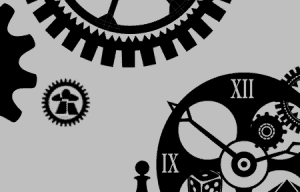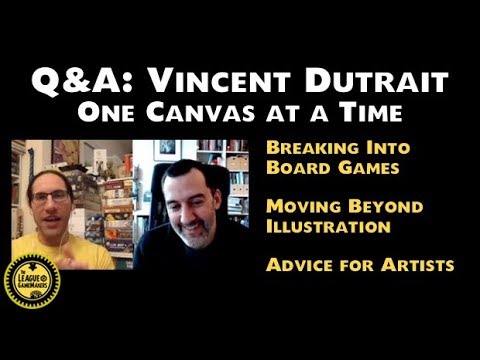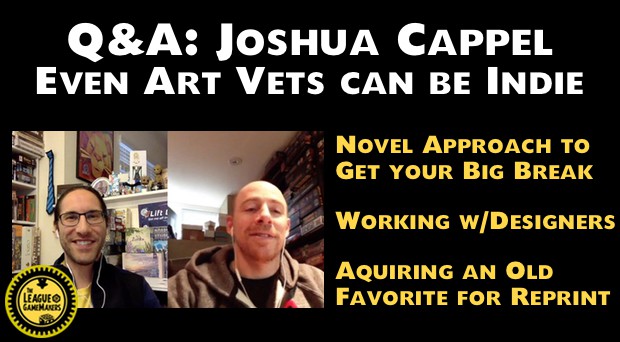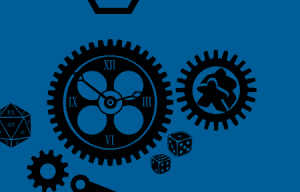
At some point in time, every game designer who’s been around for awhile has to deal with non-disclosure agreements, either because he or she is submitting a design or play-testing a design, to protect both parties involved. And, most people wonder, “What can I do if the company steals my design?” My answer to that is; not much.
- Copyright protects the text and images in the game; it does nothing about the mechanics, so it’s pretty easy to rewrite a game with a different theme.
- Trademark offers you no protection at all for the mechanics of the game.
- There’s patent protection, which is almost entirely limited to just the mechanics of the game, but you have to come up with a minimum of around $2000 (often much more) to patent a game, and since 95% or more game designs never see publication, this is a ridiculous risk. Even if you patent it, you have to be willing and able to protect that patent in court, and have the money to do so.
But rest at ease; for the same reason it’s hard to protect a game, it’s also not worth the trouble to a game company to steal a game. Most companies have a backlog of games they want to publish; stealing your wonderful idea is not only not worth their time, but it’s also not worth the trouble and expense a pissed-off submitter is likely to cause. There are exceptions; there are always exceptions, but these are very, very rare and not worth losing sleep over.
However, in some cases it still looks like a company stole your game. Having been in the business a few years, I’ve found this to be almost inevitable as a natural evolution of parallel (or derivative) design trains. What I mean is, coincidences do happen, and I’ve seen enough of them to know that that is all they are; coincidences. It is incredible to me how often I’ve observed two nearly identical game designs come out within months of one another, and that’s what I’d like to talk about.
—
In my personal experience, I’ve had two games where this happened. One was called “Knots.” A month before it came out, Rubik’s Tangle came out, independently designed and manufactured. It was a puzzle, mine was a game, so there wasn’t really a “theft” problem here, especially since the designers involved had never met or talked to one another. But the tiles! Each tile had four ropes on it, passing from side-to-side of the 2×2” tiles. Not only were the rope-patterns on the tiles nearly identical, but the way the tiles linked up was the same. They were virtually interchangeable with my Knots game. This was just bizarre. Over 20 years later “Tsuro” came out, essentially duplicating the majority of the game’s graphic layout (both the board size and rope/path tile design) and adding pawns. Did they copy it on purpose? I seriously doubt it. It’s very easy to avoid copying a design. Besides, the basic mechanics of the Tsuro turn it into a completely different game from Knots (a 2-player path building game). Incidentally, you can still buy Knots at the Jolly Games website. Just sayin’.
Years later, I had another incidence occur, this time with a game I’d made, but never published, consisting of cubes with multicolored sides that rolled over on the 5×5 playing board, the object to be that you get your set of cubes adjacent to each other with the same color face up. I was at a garage sale, and I came across some obscure game from Ideal that used exactly the same mechanic. I couldn’t believe it, again. But then…this may have been a natural evolution from the Crazy Cubes puzzle of years ago.
Were either of these “stolen ideas?” Of course not.
—
Another example is the appearance of Gamesmiths’ Throwing Stones and TSR’s Dragon Dice, the first two collectable dice games, coming out within a month of one another. Was the idea “ripped off” by TSR from Gamesmiths, or vice-versa? No, it was just a natural evolution of games from the CCG arena, the next obvious “collectable game” component. They both independently designed and published the same game concept (though their rules differed considerably).
—
And yet another example is the creation of Roborally and Robotanks. Once again, Gamesmiths came up with a design (and name, oddly enough) similar in many ways to WotC’s design; the idea was, you use programmed movement cards to move robots across the board. Unfortunately for Gamesmiths, there was a much bigger advertising budget behind Roborally, and it dominated the market. These also came out within months of each other. I’d seen both of them in their playtest form; I knew that nobody stole any ideas from anyone. Unfortunate double-whammy for Gamesmiths, however (Jeff Siadek, designer of these two games, now publishes the highly-rated Battle Stations game).
—
Another instance occurred while I sat and talked to my good friend Mark at a game convention, discussing game designs. He started talked about a design idea he had, and alarms went off in my head, because I was working on a nearly identical design. I held up my hand before he got into his second sentence, and said, “Wait, I’m working on a similar design, and I think you’re about to describe it to me,” or words to that effect. I then completed his game design description with my version of the design. Ultimately, if I ever published it, I didn’t want him thinking that I’d stolen the idea from him. He was as surprised as I was; both of us had independently designed nearly identical space-combat games.
—
Another great example was brought to me by Andrea Angiolini, codesigner of the Ulysses boardgame (with Pier Giorgio Paglia) . He commented to me that his game came out in 2001 in Nuremburg, the same time that Odysseus, by Dominic Erhard, came out. Not only were the covers of the game boxes very similar (heroic face over a ship), but in both games, the players played gods moving a single ship around the game board. Talk about convergent designs! Angioline commented, “The two games are quite different in the mechanics, but principles are so close!” He had never even met Erhard.
—
None of this is surprising to me anymore; game designs, after all, are usually based at some level on existing designs, they’re very derivative, usually with some little tweak added to make them different. Once in a great while, a new paradigm comes along which completely changes the industry, like RPG’s, or CCG’s, resource management or deck building; each new mechanic spawns a thousand children. But the point is that game designs all come from common origins, and themes are usually limited to human experience, so design duplication is inevitable. If someone comes to me and says, “I’ve designed a great game about Asteroid Mining,” I’ll say, “That’s nice. I’ve designed four. Three of them are mediocre, and I own at least two designed and published by other people. What’s so special about yours?”
BOTTOM LINE IS, IF YOU’RE WORRIED ABOUT GETTING YOUR DESIGN STOLEN, YOU’RE PROBABLY WORRYING ABOUT NOTHING.
If a company comes out with a game with the same theme as the one you submitted to them, they were very likely designing it before you ever submitted. If you use game design elements derived from existing games already on the market, then the odds of someone duplicating your design are even higher. The trick is just to design something that’s so off-the-wall and new, that no one else could possible have thought of it yet. Of course, there are a lot of crazy game designers out there, so that might be pretty tough.








